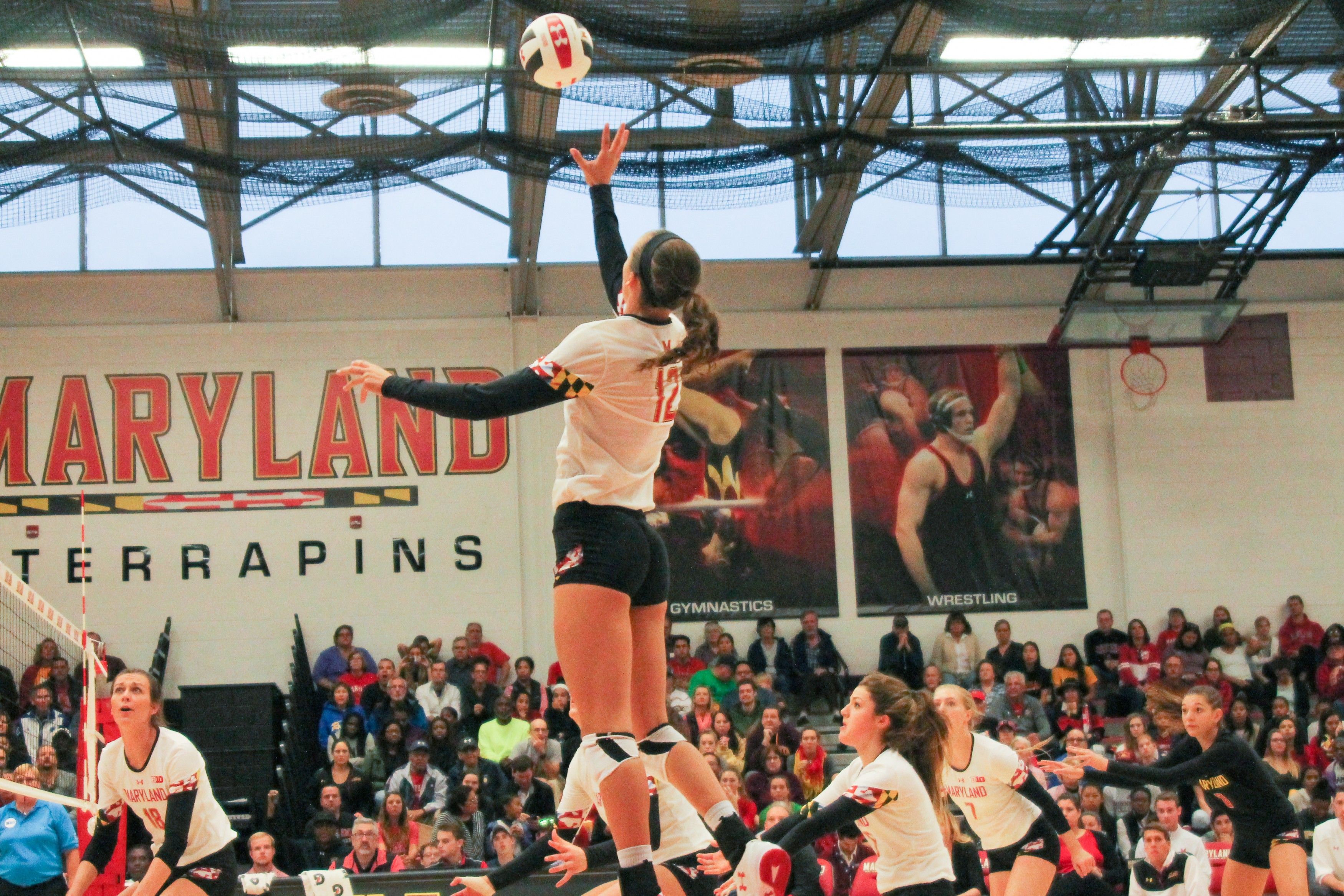When Maryland volleyball traveled to take on No. 6 Illinois, the team was looking to win their first set against a top-10 foe after being swept by No. 3 Minnesota and No. 4 Penn State.
While Illinois was solid on offense in the straight-set win, it was the Illini defense that truly controlled the match.
Illinois, which averages 14.26 digs and 2.59 blocks per set, had one of its best three-set defensive efforts of the season, tallying 55 digs and eight blocks.
“They scrapped really well defensively and got themselves some good transition swings,” coach Adam Hughes said.
[Read more: Maryland volleyball struggles mightily in 3-0 loss to No. 6 Illinois]
The Illini held the Terps to a negative hit percentage through the first two sets and a .055 clip for the match. Maryland has yet to hit over .100 against a top-10 opponent.
While Illinois does not rank highly as a team in digs or blocks, the Illini’s team defense has allowed them to hold teams to just a .167 hitting percentage on the season.
“They get good touches on the block and their defenders are able to track down balls well,” outside hitter Liz Twilley said.
[Read more: Maryland volleyball’s middles stepped up and powered a sweep over Indiana]
Middle blocker Ali Bastianelli, who ranks 20th in the country with 1.39 blocks per set, recorded only two blocks for Illinois. Outside hitter Erika Pritchard spent much of the night face-to-face with Bastianelli and led the Terps with nine kills.
“Erika was matched up with one of the best players in the country,” Hughes said, “and she held her own.”
But Bastianelli’s teammates picked up the slack, with middle blocker Ashlynn Fleming pacing the Illini with six blocks and setter Jordyn Poulter adding five.
Hughes said that while Bastianelli did not appear much on the statsheet, she still had a significant impact.
“When you have somebody like that, they let people around you be a little more calm,” Hughes said, “because she can move people the way they need to.”
The Illini also made defense easier on themselves with a strong service game. While they registered only four aces, their serves kept the Terps scrambling in reception, making it harder for Maryland to construct offensive possessions.
The issues receiving serves meant Maryland was on its heels through most of the evening, allowing the Illini to read the Terps offense and keep them in check.
“We didn’t give up a lot of aces, but we were out of system a lot,” Hughes said. “We had to stay aggressive — that was a big part of the gameplan — but the first touch wasn’t where it needed to be.”



